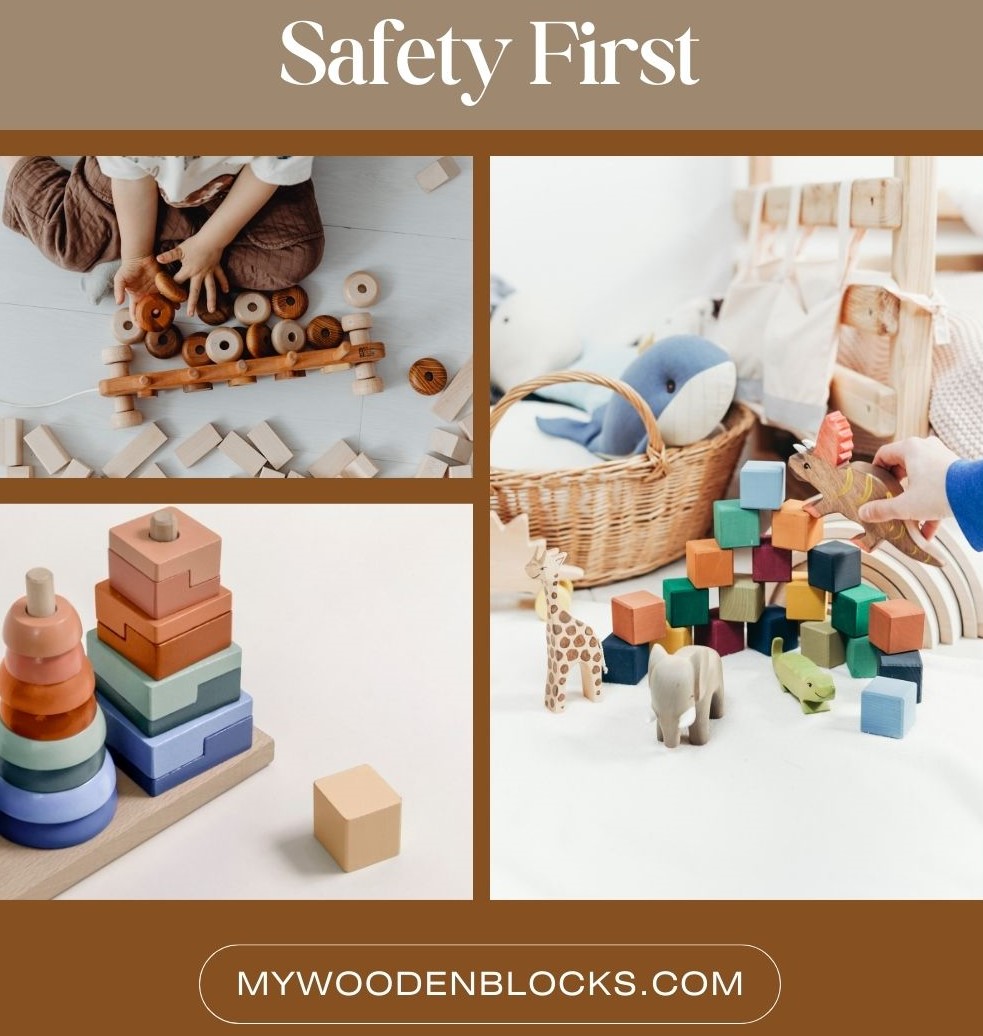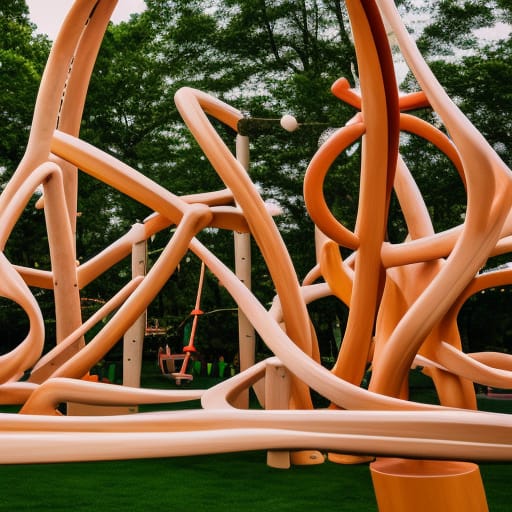When it comes to choosing toys for children, safety is a top concern for parents.
In recent years, wooden toys have gained popularity due to their timeless appeal and perceived safety. But are wooden toys truly safe for children?
In this article, we will explore the benefits of wooden toys and discuss the safety features that make them a reliable choice for children of all ages.

Natural and Non-Toxic Materials
To begin with, one of the key advantages of wooden toys is that they are often made from natural materials, such as solid wood sourced from sustainable forests.
This emphasis on natural materials not only ensures the safety of children but also promotes a healthier play environment.
Unlike plastic toys that may contain harmful chemicals like BPA or phthalates, wooden toys are typically free from these toxins.
This makes them a much safer option for children who have a natural inclination to explore the world through their mouths.
By choosing wooden toys, parents can have peace of mind knowing that their children are not exposed to potentially harmful substances during playtime.
Furthermore, the use of natural materials in wooden toys aligns with the growing awareness of eco-consciousness and sustainable living, allowing parents to make a positive impact on both their children’s well-being and the environment.

Durability and Longevity
Speaking of the durability spect, unlike their plastic counterparts, wooden toys are known for their durability and longevity. They are less likely to break or shatter, reducing the risk of small parts becoming choking hazards.
The sturdiness of wooden toys ensures that they can withstand rough play and last for generations.
This longevity not only makes wooden toys a safer choice but also a more sustainable one, as they can be passed down to younger siblings or other children.
Furthermore, the robust nature of wooden toys allows them to withstand the rigors of rough play, making them an ideal choice for active children. They can endure energetic play sessions, withstand accidental drops or impacts, and emerge unscathed, ready to provide countless hours of enjoyment.
By opting for wooden toys, parents can make an environmentally conscious decision.
Wooden toys are designed to withstand the test of time, meaning they can be passed down from one generation to another, creating lasting memories and joy for multiple children.
They become cherished heirlooms, representing a tangible link between past and present, and embodying the love and care that has been passed down through the family.
This practice of reusing toys reduces waste and promotes a more sustainable approach to playtime. It also instils valuable lessons in children about the importance of taking care of their belongings and cherishing items that are built to last.

Stimulating Imagination and Creativity
Moving on to the benefits for imagination and creativity, in addition to their safety and durability, wooden toys offer a multitude of benefits that stimulate imagination and creativity in children.
With their simple and open-ended design, wooden toys provide a blank canvas for children to explore and create their own narratives during playtime.
Without the distractions of flashy lights or pre-programmed sounds, wooden toys encourage children to engage in imaginative and exploratory play, igniting their creativity and imagination.
By relying on their own thoughts and ideas rather than being guided by predefined features, children can develop essential cognitive skills. They learn to think critically, solve problems, and make decisions independently as they navigate the possibilities presented by wooden toys.
This process of imaginative and exploratory play fosters cognitive development by stimulating their ability to think abstractly, make connections, and develop a deeper understanding of the world around them.
Moreover, wooden toys provide a screen-free playtime experience, which is not only safe but also highly beneficial for children’s overall development.
In a world filled with digital devices and constant exposure to screens, wooden toys offer a refreshing break and an opportunity for children to engage in hands-on, tangible play.
By interacting directly with the physical aspects of wooden toys, such as their texture, weight, and shape, children enhance their sensory experiences and develop a deeper connection with the world.

This type of play also promotes the development of fine motor skills and hand-eye coordination.
From grasping and manipulating wooden blocks to assembling puzzles and stacking toys, children refine their dexterity and control.
The tactile nature of wooden toys provides a sensory-rich environment that aids in the development of these crucial motor skills.
By fostering creativity, encouraging problem-solving, and promoting sensory stimulation, wooden toys offer a holistic approach to play that contributes to children’s overall growth and well-being.
Sensory Stimulation and Motor Skills
Shifting the focus to sensory stimulation and motor skills, wooden toys provide an enriching and tactile experience for children, captivating their senses and promoting sensory development in unique ways.
The natural texture and weight of wooden toys create a sensory-rich environment that plastic toys simply cannot replicate.
Moreover, as children engage with wooden toys, they experience a diverse array of shapes, sizes, and textures, stimulating their senses and enhancing their overall sensory development.
When it comes to grasping wooden blocks, children exercise their fine motor skills, refining their ability to control and manipulate objects with precision.
The act of picking up, holding, and manipulating these wooden pieces helps children develop their hand-eye coordination, as they learn to coordinate their movements to achieve specific goals.
By repeatedly engaging in these actions, children gradually strengthen their dexterity and control, paving the way for future tasks that require delicate hand movements.
Furthermore, wooden puzzles and stacking toys offer children endless opportunities to explore spatial relationships and problem-solving skills.
As they manipulate the various puzzle pieces or stack wooden blocks, children engage in critical thinking and logical reasoning. They learn to analyze shapes, sizes, and patterns, making decisions based on trial and error.
Through these interactive experiences, children develop essential cognitive abilities, such as spatial awareness, pattern recognition, and problem-solving strategies.

In addition to fine motor skills and cognitive development, the tactile nature of wooden toys fosters a deeper connection between children and the physical world around them.
By interacting directly with the wooden surfaces, children not only experience the texture, but they also become aware of the weight and shape of the toys.
This multi-sensory engagement enriches their sensory experiences, encouraging them to explore and understand their environment through touch.
Environmentally Friendly
In an era where environmental consciousness is crucial, wooden toys offer an eco-friendly alternative to plastic toys.
With their use of sustainable materials and minimal carbon footprint, wooden toys support a greener future for our children.
Additionally, the longevity of wooden toys reduces waste, as they can be reused or repurposed instead of ending up in landfills.
By choosing wooden toys for their children, parents can actively contribute to environmental sustainability.
Plastic toys often end up in landfills, contributing to the growing problem of plastic waste and pollution.
In contrast, wooden toys are made from sustainable materials, such as responsibly sourced solid wood from forests managed for long-term environmental health.
This means that the production of wooden toys has a lower impact on the environment, as it supports sustainable forestry practices and reduces deforestation. For more information, please visit this blog.
Furthermore, wooden toys have a minimal carbon footprint compared to their plastic counterparts.
The manufacturing process for plastic toys involves the extraction and processing of fossil fuels, which release greenhouse gas emissions and contribute to climate change.
In contrast, wooden toys require less energy-intensive processes and have a lower carbon footprint throughout their lifecycle. You can read more about wooden toy production in this blog.
Choosing wooden toys can help reduce carbon emissions and mitigate the effects of climate change, supporting a greener and more sustainable future.

As mentioned earlier, wooden toys are known for their sturdiness and ability to withstand rough play. This means that they are less likely to break or become damaged, allowing them to be passed down from one generation to another or shared among multiple children.
This practice of reusing and repurposing toys reduces the demand for new toys and helps minimize waste generation.
By extending the lifespan of toys, wooden toys contribute to a circular economy model and reduce the strain on natural resources.
Safety Features
In addition to the rigorous safety testing that wooden toys undergo to meet or exceed safety standards, manufacturers prioritize certain precautions to ensure the safety of children during playtime.
One of the key measures taken is the elimination of sharp edges, ensuring that the toys are free from any potentially harmful protrusions that could cause injuries.
Furthermore, manufacturers pay careful attention to smoothing out surfaces, guaranteeing that there are no rough or abrasive areas that could harm a child’s delicate skin.
By taking these steps, wooden toy manufacturers aim to create a safe and enjoyable play experience for children.
Another important aspect is the use of non-toxic finishes on wooden toys. Manufacturers prioritize selecting finishes that are safe for children, minimizing the risk of exposure to harmful substances.
This choice not only ensures the physical safety of children but also provides peace of mind to parents, knowing that their children are not being exposed to potentially dangerous chemicals during play.

While manufacturers put great effort into ensuring the safety of wooden toys, it is still crucial for parents to play an active role in maintaining the toys’ safety.
Regular inspection of wooden toys is essential to identify any signs of wear or damage that may compromise their safety. This includes checking for loose parts, cracks, or splinters that could pose a risk to children.
By promptly addressing any issues and, if necessary, repairing or replacing the toys, parents can maintain a safe play environment for their children.
Conclusion
In conclusion, wooden toys provide a safe and beneficial playtime experience for children.
With their natural materials, durability, and focus on open-ended play, wooden toys promote the development of imagination, creativity, and essential motor skills.
Additionally, they offer a safer alternative to plastic toys by reducing exposure to harmful chemicals.
By choosing wooden toys, parents can provide their children with engaging, eco-friendly, and safe toys that stand the test of time.
Remember, as with any toy, adult supervision is still necessary to ensure children’s safety during play.
By being mindful of the toys we choose and regularly assessing their condition, we can create a safe and enriching play environment for our little ones.
Overall, wooden toys not only provide a safe and durable playtime experience but also have a profound impact on children’s cognitive, imaginative, and motor skill development.




